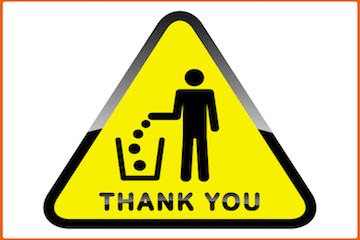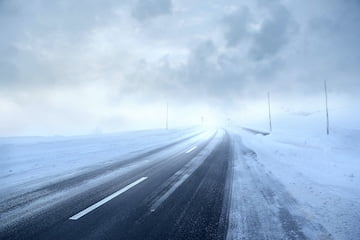This article covers ways to prevent slips and falls in the working.
Slips and falls are a bigger issue than you might first imagine. According to UK HSE statistics slips and falls account for over a third of major injuries and 20% of over 3 day injuries.
Applicable Regulation
In the Workplace (Health, Safety and Welfare) Regulations of 1992, Regulation 12, Section (3) states that, “so far as is reasonably practicable, every floor in a workplace and the surface of every traffic route in a workplace shall be kept free from obstructions and from any article or substance which may cause a person to slip, trip or fall.’
Let’s look at some ways employers can reduce the chance of workplace slips and trips
Good housekeeping
On simple but effective way for preventing slips and falls is good housekeeping.
This means a tidy as you go policy. And ensuring properly disposing of waste.
Bad housekeeping causes accidents and increases risks to everyone onsite.
It is not just good enough to have a walkway, it must be kept clear, no trailing wires, no obstructions.
Employees and cleaners need to have ‘a see it, sort it’ attitude to ensure these and other work areas are kept clear. Consider, is the cleaning regime effective?
To ensure employees have the right mindset you may consider providing them with slips and trips training.
Are there enough bins, storage facilities etc Additionally, disposing of and segregating your waste will reduce accident risks, and protect the environment by making it easier for us to recycle.

Slips and falls risk assessment
For slip and trip risks to be adequately controlled you need to undertake a risk assessment. Between 2010 and 2012, Health and Safety Inspectors have found that 22% of all workplaces surveyed had no slip, trip and fall (STF) risk assessment.
Here are some recommended steps to completing your risk assessment:
- Look for slip and trip hazards around the workplace, including floor coverings and their condition, uneven floors, trailing cables and areas that are sometimes slippery due to spillages. For example, self-service drinks areas and fridges. Don’t forget to include any outdoor areas, remembering that weather conditions may be a factor.
- Decide who might be harmed and how. Who comes into the workplace? Are they at risk? Are some groups more at risk than others?
- Consider the risks. Are there already measures in place to deal with the risks? Are floor coverings suitable for the area and the work carried out there? What cleaning and maintenance systems are in place? Are regular inspections carried out? Are employees instructed to keep traffic routes clear?
- Record your findings, especially if you have five or more employees.
- Regularly review the assessment. If any significant changes take place, make sure that precautions are still adequate to deal with the risks.
Danger from Stairs
Stairs and steps are significant causes of slips and trips. In relation to stairs and steps, both ascending and descending can be hazardous.
Descending stairs may be more likely to cause accidents and these accidents may result in more serious injuries. Ramps, kerbs and other level changes must also be considered.
There are simple ways of preventing accidents occurring on stairs and steps.
For example:
- Keep stairs clean & tidy
- Keep stairs dry
- Deal with spills effectively
- Exercise great caution when cleaning stairs – ideally stairs should be cleaned when they are not in use and cordoned off·
- Avoid having to carry items on stairs
- Avoid having to rush up or down stairs
- Do not use hand-held devices while using stairs
- Provide handrail(s) if needed
- Visually contrasting handrails may be more effective
- Provide proper lighting, without glare or shadow
Snow and Ice
You need to consider where staff are walking frequently and put a system in place to ensure reasonable measure are taken to prevent trips and falls on ice. Obviously for most companies this involves gritting.
It is relatively cheap and quick and it best applied the evening before a frost. Grit becomes ineffectual at really cold temperatures (around -8C and colder). At this point liquid brine (salt water) will still have an impact. This maybe a worthwhile solution for businesses with large private carparks particularly those that contain slopes.

Using Signs
Signs should only be used where hazards cannot be avoided or reduced, e.g. a slippery pedestrian surface should be slip resistant rather than just erecting a sign. A review of slip, trip and fall accidents where the floor was being wet cleaned showed that the presence of signs was mentioned in over half of the accident reports. This indicates that floor signs were ineffective in preventing slips, trips and falls on wet floors.
Safety signs do not substitute for necessary protective measures.
Signs are the last line of defence against hazards. Regulation 160 of the General Application Regulations says that signs should be provided where hazards cannot be avoided or adequately reduced by collective measures or work organisation. Regulation 160 also says that employers should have regard to the risk assessment and the safety statement when determining whether or not to provide a sign.
That concludes our article on slips and trips. Hopefully you now have a few ideas that you can implement in your workplace and reduce the chance of slip and fall injuries.







